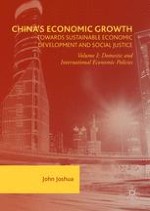2017 | OriginalPaper | Buchkapitel
4. The Comparative Advantage of Nations
verfasst von : John Joshua
Erschienen in: China's Economic Growth: Towards Sustainable Economic Development and Social Justice
Verlag: Palgrave Macmillan UK
Aktivieren Sie unsere intelligente Suche, um passende Fachinhalte oder Patente zu finden.
Wählen Sie Textabschnitte aus um mit Künstlicher Intelligenz passenden Patente zu finden. powered by
Markieren Sie Textabschnitte, um KI-gestützt weitere passende Inhalte zu finden. powered by
